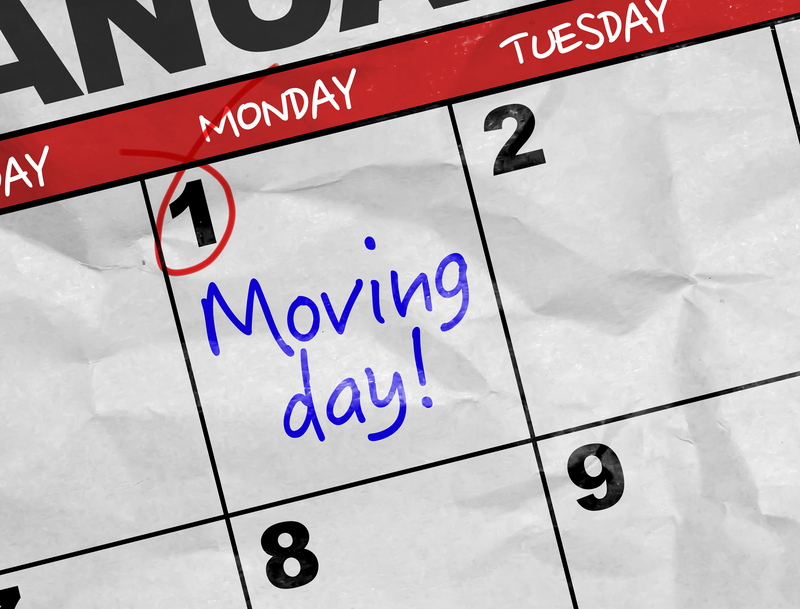The Strategic Approach to Piano Moving: Don't Go It Alone
Posted on 25/05/2025
The Strategic Approach to Piano Moving: Don't Go It Alone
Pianos are not just musical instruments; they are cherished centerpieces in many homes and venues, carrying significant monetary and sentimental value. When it comes time to move one, the task can quickly transform from seemingly straightforward to highly complex and risky. Adopting a strategic approach to piano moving is essential to protect your investment and avoid unnecessary stress or damage. In this article, we'll explore why professional piano moving is the smartest choice and provide insights into the intricate process that makes it a job for experts, not amateurs.

Understanding the Challenges of Piano Moving
Piano relocation requires more than mere muscle; it demands a thorough understanding of the instrument's structure, weight distribution, and delicate components. Let's delve into the unique challenges associated with moving a piano and why you should think twice before trying to do it yourself.
Size and Weight Considerations
- Grand Pianos: These can weigh anywhere from 500 to 1200 pounds and often span over six feet in length.
- Upright Pianos: While these are smaller, they still typically weigh 300 to 500 pounds.
- Digital Pianos: Though lighter, they can still be awkward to handle due to bulk and sensitive electronics.
Pianos are not just heavy; they are also unbalanced, with much of the weight concentrated in areas that can be difficult to grip or support. Attempting to move one without specialized equipment increases the risk of injury or damage to both the instrument and your property.
Delicate and Complex Construction
Every piano houses thousands of intricate moving parts. The tension on its strings may reach up to 20 tons, and the finely-tuned mechanisms within are susceptible to jarring shocks. Dropped or improperly handled, a piano can be put out of tune, sustain cosmetic damage or suffer internal mechanical failure - all of which can be costly to repair.
Physical Obstacles and Structural Risks
Stairs, narrow doorways, tight hallways, and sharp corners amplify the possibility of scraped walls, gouged floors, and crushed fingers or toes. Safely maneuvering through these obstacles requires anticipation, planning, and the right techniques.
Why You Should Never Move a Piano Alone
While some may be tempted to save money by enlisting friends and family, the risks often outweigh the savings. Here's why professional piano movers are worth every penny:
- Expertise: Professionals understand the internal and external vulnerabilities of pianos. They use proven methods to keep your instrument safe.
- Equipment: Specialized tools such as piano skids, heavy-duty dollies, ramps, and straps are necessary to move pianos securely, especially over uneven or steep surfaces.
- Insurance: Professional movers carry liability insurance, offering you peace of mind in the event of unlikely accidents.
- Efficiency and Safety: Trained teams complete the move faster and with fewer risks, sparing you from possible injury or costly mistakes.
Common DIY Piano Moving Mistakes
Some of the most frequent errors made by those who attempt to move a piano without help include:
- Underestimating weight and balance: This leads to dropped pianos and broken parts.
- Poor tool choice: Using furniture dollies or makeshift devices increases risk.
- Lack of planning: Failing to measure doorways and plot the best route often results in damage to both the piano and your home.
- Inadequate manpower: Attempting to move a piano with too few helpers is dangerous.
The Strategic Approach Adopted by Professional Piano Movers
Understanding the strategic approach employed by expert piano movers sheds light on why it's the smartest route. Their method is comprehensive, well-thought-out, and designed to ensure both safety and efficiency.
1. Pre-Move Assessment and Planning
- Piano Evaluation: Movers identify the piano's type, size, age, and any unique vulnerabilities.
- Home Survey: They inspect all routes from pickup to drop-off, measuring doorways, staircases, and hallways for clearance and identifying potential obstacles.
- Logistics Planning: Detailed plans account for the best time of day, weather conditions, and necessary permits or elevator reservations (for apartments and high-rises).
2. Specialized Equipment Utilization
- Piano Skids: Custom-fit supports designed to cradle different types of pianos during transport.
- Heavy-Duty Dollies and Ramps: Used to safely roll the instrument over various surfaces and negotiate stairs or vehicle loading.
- Padded Blankets and Wraps: Protect finishes from bumps and abrasions.
- Straps and Harnesses: Secure the piano tightly, preventing unwanted movement during transit.
3. Dismantling When Necessary
Grand pianos often require partial disassembly, such as removing legs, pedals, or music stands. Professional movers know exactly how to disassemble and reassemble these parts while keeping track of screws and components.
4. Manoeuvring with Precision
Piano moving is a team effort, often involving 3-5 trained professionals:
- Clear, coordinated communication prevents errors.
- Strong teamwork ensures steady weight distribution and careful turning around corners or through tight spaces.
- Cushioning and protecting surrounding property is a top priority.
5. Secure Transport and Delivery
Once loaded, piano movers use specialized, climate-controlled vehicles for long-distance or sensitive moves, minimizing exposure to temperature and humidity swings. On arrival, the piano is reassembled, positioned, and thoroughly checked for any signs of shift or stress.
Choosing the Right Piano Moving Company
Not all moving services are created equal--piano moving is a niche requiring specific expertise. Consider the following factors when selecting a mover:
- Experience: Choose a mover with a proven track record in piano transportation--ask for references.
- Certification and Insurance: Verify licenses and adequate insurance coverage.
- Specialized Equipment: Confirm that they use the professional tools described above.
- Transparent Estimates: Look for detailed, upfront quotes rather than ballpark figures.
- Positive Reviews: Check online feedback and industry reputation for peace of mind.
Preparing for Your Piano Move: Tips for Homeowners
A strategic approach also involves preparation on your part. Here are some steps you can take to streamline the process:
- Communicate Clearly: Provide the mover with full information about the instrument and both origin and destination sites.
- Clear the Path: Remove rugs, furniture, and other obstacles ahead of time.
- Secure Pets and Children: Keep them safely away from the moving route on moving day.
- Document the Piano's Condition: Take photographs of all sides and parts before the move.
- Notify Your Building: If you live in a multi-story or managed property, notify management and book elevators if necessary.
What to Expect After the Move
After your piano has arrived in its new home, don't be surprised if it needs re-tuning. Even the most careful move can cause minor internal shifts that affect sound quality. Budget for a post-move inspection by a qualified piano technician to ensure everything is in perfect working order.
Cost Considerations
The cost to move a piano varies based on instrument type, move complexity, travel distance, and any special requirements (e.g., craning through windows, long carries, or tight staircases). While it may seem expensive compared to regular movers, remember you're paying for protection, expertise, and peace of mind.
- Upright piano moves within a city may range from $200 to $500.
- Grand piano moves, or those involving difficult access, may exceed $1,000.
- Long-distance or interstate moves are billed separately and can be higher.
Cutting corners is not recommended. Attempting a DIY move, especially without the proper equipment or experience, can result in damage worth far more than the savings.
Frequently Asked Questions About Piano Moving
Can regular movers move a piano?
While some general moving companies offer piano moving as a service, it's crucial to verify their expertise, equipment, and insurance. True piano movers possess specialized knowledge and tools to ensure safe handling.
Is it safe to move a digital piano myself?
Digital pianos are generally lighter, but can still be delicate--especially if they have furniture-style cabinets. Ensure you have extra help and proper equipment to avoid injury or damage.
How long does it take to move a piano?
Short, local moves may only take a couple of hours, but more complex situations (long flights of stairs, difficult access points, or long-distance travel) lengthen the process. Scheduling a home walkthrough ahead of time helps ensure the right timeline.
Will moving my piano put it out of tune?
It's common for a piano to need tuning after a move due to minor internal shifts and environmental changes. Arrange for re-tuning a few weeks after the move to allow the piano to acclimatize.

Conclusion: The Smart, Strategic Way to Move Your Piano
Don't go it alone when it comes to piano moving. The value, fragility, and complexity of a piano demand a strategic and careful approach. Hiring professional piano movers is not only the safest choice, it's the most intelligent and cost-effective in the long run. By trusting your instrument to experts, you preserve both its beauty and its sound for generations to come. Take the strategic approach to piano moving--protect your investment and your peace of mind.
Looking for a Reliable Piano Moving Service?
If you're planning a move and need to transport your piano, begin by researching reputable, insured, and experienced piano moving companies in your area. Request multiple quotes, review testimonials, and select the service that offers the perfect blend of skill, value, and care. Remember, in the world of piano moving, going it alone is never worth the risk.



